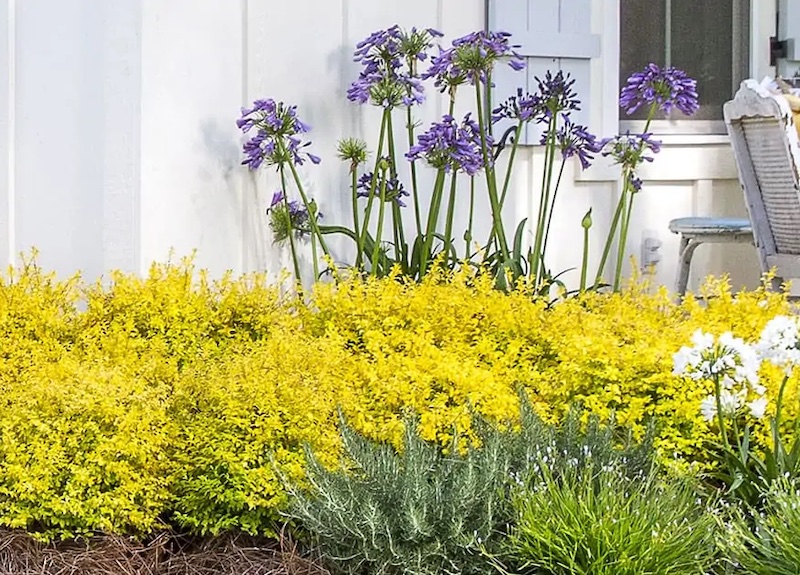Exactly how to Plant and Maintain Agapanthus in Your Garden
Exactly how to Plant and Maintain Agapanthus in Your Garden
Blog Article
Letting Loose the Secret to Successful Agapanthus Growing: Tips and Tricks for a Flourishing Garden
In the realm of horticulture, growing agapanthus successfully requires a critical strategy that includes various aspects of plant care. By recognizing the subtleties of agapanthus growing, one can produce a setting where these plants flourish and bloom generously.
Planting Agapanthus: Ideal Practices
When planting Agapanthus, correct soil prep work is vital for making certain successful development and development of these attractive flowers. Agapanthus, generally referred to as Lily of the Nile or African lily, thrives in well-draining dirt with a slightly acidic to neutral pH degree - Agapanthus. Prior to planting, it is important to change hefty clay soils with organic matter such as compost or peat moss to improve water drainage and offer vital nutrients for the plants
To grow Agapanthus, pick a place that receives complete sunlight to partial color, as this will certainly promote healthy development and bountiful flowering. Dig an opening two times the diameter of the plant's root sphere and place the Agapanthus at the exact same deepness it was formerly expanding. Delicately backfill the hole with soil, weighing down firmly to eliminate any type of air pockets around the origins.
Water the newly planted Agapanthus completely and proceed to keep the soil evenly moist, particularly throughout the plant's active growing period. Agapanthus. Applying a balanced fertilizer once a month can additionally sustain the plant's development and flowering. By complying with these ideal techniques for planting Agapanthus, you can develop a sensational display screen of these exciting flowers in your garden
Suitable Dirt Issues for Agapanthus
For optimal development and growing success of Agapanthus plants, ensuring the soil conditions are suitable is crucial. Agapanthus flourishes in well-draining dirt with a somewhat acidic to neutral pH degree varying from 6.0 to 7.0. This kind of soil enables for appropriate water drain, stopping waterlogging which can cause root rot. To boost dirt drain, take into consideration including raw material such as garden compost or peat moss when preparing the growing website. In addition, Agapanthus prefers dirt that is abundant in nutrients, so including a well balanced fertilizer throughout the expanding period can promote healthy growth and dynamic blooms.

Watering and Fertilizing Tips
To make certain healthy and balanced growth and vibrant blooms, proper watering and fertilizing strategies are essential for effective Agapanthus growing. Agapanthus plants benefit from regular watering, especially throughout the expanding period.
When click here now it involves feeding Agapanthus, a balanced plant food with equivalent parts nitrogen, phosphorus, and potassium can be applied in the springtime to promote healthy and balanced growth and flowering. Slow-release plant foods are ideal for anchor giving nutrients progressively over an extended period. Avoid over-fertilizing, as this can bring about extreme foliage development at the cost of blooms.
In addition, including organic issue like compost right into the soil can enhance nutrient degrees and improve dirt structure, assisting in the general health and wellness of the Agapanthus plants. By following these watering and feeding suggestions, garden enthusiasts can ensure their Agapanthus plants thrive and create spectacular display screens of blossoms.
Trimming and Deadheading Techniques
Appropriate trimming and deadheading methods play an important duty in preserving the wellness and visual appeals of Agapanthus plants, enhancing the vital techniques of watering and feeding for successful growing. Trimming Agapanthus includes getting rid of spent blossom heads, dead or yellowing leaves, visit homepage and total shaping of the plant to promote much better development. Deadheading, the procedure of removing faded blossoms, not just boosts the plant's appearance however additionally encourages further flowering.
When deadheading Agapanthus, it is recommended to trim off the blossom stem at the base using sharp, tidy shears. This procedure reroutes the plant's energy from seed production back into origin and vegetation growth, promoting a much healthier and a lot more durable plant. Normal deadheading can extend the flowering period of Agapanthus and stop self-seeding, which can bring about overcrowding.
In terms of pruning, Agapanthus typically benefits from a light trim after flowering to tidy up the plant and encourage fresh growth. Cutting down the invested blossom stems and getting rid of any kind of damaged or dead vegetation helps maintain the plant's vigor and total look. Nonetheless, it is necessary to avoid cutting right into the crown of the plant, as this can compromise its health and wellness.

Protecting Agapanthus From Vermins and Diseases
Carrying out effective bug and disease administration strategies is vital to protecting the health and vitality of Agapanthus plants in farming. One common parasite that affects Agapanthus is the Agapanthus borer, a caterpillar that passages right into the plant, creating damage to the flowers and leaves.
In enhancement to parasites, Agapanthus are at risk to conditions such as origin rot and fungal fallen leave areas. By staying attentive and resolving parasite and condition problems quickly, gardeners can help their Agapanthus thrive and thrive.

Conclusion
Finally, successful growing of agapanthus requires proper growing techniques, suitable soil conditions, appropriate watering and fertilizing, routine pruning and deadheading, and security from conditions and pests. By complying with these pointers and tricks, garden enthusiasts can guarantee a prospering garden filled up with beautiful agapanthus blooms. Agapanthus. Keep in mind to preserve regular treatment and focus to detail to promote the wellness and long life of these stunning plants
When planting Agapanthus, proper soil preparation is vital for making certain successful growth and growth of these attractive blossoms.Water the freshly grown Agapanthus thoroughly and continue to maintain the dirt equally wet, especially throughout the plant's energetic expanding period.For optimum development and growing success of Agapanthus plants, making certain the dirt problems are suitable is critical. When growing or hair transplanting Agapanthus, guarantee the soil is well-prepared to supply the essential foundation for the plants to establish themselves successfully. One usual parasite that influences Agapanthus is the Agapanthus borer, a caterpillar that passages into the plant, causing damage to the fallen leaves and blossoms.
Report this page